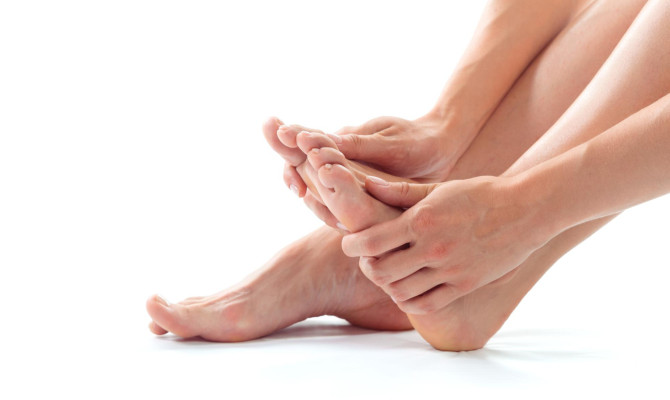Myasthenia gravis: Types, Symptoms & Management

- Myasthenia gravis
- 17 Aug 2023
Overview
What is Myasthenia gravis?
Myasthenia gravis is a chronic autoimmune illness that affects the neuromuscular system and causes weakening in the skeletal muscles. Skeletal muscles are the muscles that attach to your bones and contract to allow for movement in your arms and legs as well as breathing.1Overview| Researched based study from Ninds.nih.gov
Myasthenia gravis is characterized by muscle weakness that gets worse after bouts of exercise and gets better after bouts of rest. This is the disease’s defining characteristic. Certain muscles, such as those that govern the following, are frequently (but not always) involved in the condition.
These muscles include:
- Movement of the eyes and eyelids
- Facial expressions
- Chewing
- Talking
- Swallowing
Myasthenia gravis is not always recognized as the cause of a patient’s symptoms, particularly if the start of the condition occurs suddenly. The degree to which an individual is affected by muscle weakness varies substantially from person to person.

Types
Types of Myasthenia gravis
Myasthenia gravis can manifest itself in two distinct clinical manifestations:
Ocular
- Muscle weakness is commonly the first symptom of ocular myasthenia gravis, and it typically manifests itself in the muscles of the eyelids as well as other muscles that control movement of the eye (extraocular muscle).
Generalized
- In cases of generalized myasthenia gravis, the muscle weakening affects the ocular muscles in addition to a varied combination of the arm, leg, and respiratory muscles.4Types| Researched based study from Mda.org
Causes
What are the causes of Myasthenia gravis (MG)?
- An army of immune cells that would typically attack bacteria and other “germs” that cause disease instead target cells and/or proteins that serve a crucial role in the body. This occurs when immune cells make a mistake about what they are supposed to be attacking.
- In the majority of cases of myasthenia gravis, the immune system attacks the acetylcholine receptor, which is a protein found on muscle cells and is essential for the innervation and, ultimately, the contraction of muscles.
- The production of antibodies by the immune system, which then damage the ACh receptor (AChR), which is a docking site for the neurotransmitter acetylcholine (ACh), is what causes myasthenia gravis (MG).
- Some treatments work by inhibiting an enzyme called acetylcholinesterase (AChE), which is responsible for breaking down acetylcholine, while others focus on the immune system.4Causes| Researched based study from Mda.org
Symptoms
Signs and symptoms of Myasthenia gravis
Myasthenia gravis, often known as MG, is a disease that affects the body’s voluntary muscles, which are the muscles that humans may choose to move at will.2Symptoms| Researched based study from Nhs.uk
For Ocular MG
- It most commonly affects the muscles that control movement of the eyes and eyelids.
- As a consequence of this, some of the initial symptoms of Myasthenia gravis (MG) include a partial paralysis of eye movements (also known as ophthalmoparesis)
- Double vision (also known as diplopia)
- Droopy eyelids (also known as ptosis).
For Generalized MG
- In cases of generalized Myasthenia gravis (MG), weakness typically spreads in a pattern that begins in the face and neck, then moves to the upper limbs, hands, and finally the lower limbs.
- It is possible that activities such as raising the arms over the head, rising from a seated position, walking long distances, climbing stairs, and grasping heavy objects will become difficult.
Common symptoms
- Early on in the progression of MG, patients may also have weakness and weariness in the neck and jaw.
- This weakness can cause trouble speaking (also known as dysarthria), chewing, swallowing (also known as dysphagia), and holding the head up.
- Additionally, it might result in repeated episodes of choking and make eating an unpleasant and tiring experience.
- It is extremely unusual to have only limb weakness.
- In extremely unusual instances, the weakening may expand to the chest muscles that are responsible for controlling respiration.2Symptoms| Researched based study from Nhs.uk
Risk factors
Who is at risk of developing Myasthenia gravis?
Gender & race
- Myasthenia gravis affects both sexes and can be found in people of all different races and ethnicities.
Age
- It strikes young adult females under the age of 40 and elderly males over the age of 60 the majority of the time, but it can strike people of any age, including children.
Heredity
- Myasthenia gravis cannot be passed on from parent to child, nor is it contagious. It’s possible that the illness could strike more than one member of the same family on rare occasions.
Pregnancy
- Neonatal myasthenia is a disorder that can occur when a fetus acquires antibodies from a mother during pregnancy. It is a condition that affects neonates very seldom. The symptoms of neonatal myasthenia gravis typically go away between two and three months after a child is born if the condition is just transitory.
- Children born to healthy mothers have an extremely small risk of developing congenital myasthenia. This condition is not an autoimmune disorder but it can cause symptoms that are very similar to those caused by myasthenia gravis.1Risk factors| Researched based study from Ninds.nih.gov
Triggers
What drugs can trigger Myasthenia gravis?
There are a lot of prescription medicines that might make the symptoms of MG more obvious or make them worse.
These are the following:
- Neuromuscular blocking drugs.
- Aminoglycoside and quinolone antibiotics
- Anti-arrhythmic medications for the heart, including all beta-blockers and procainamide
- When administered intravenously, local anesthetics like lidocaine and procaine, among others, Magnesium salts
- Penicillamine is utilized in the treatment of other autoimmune illnesses such as Wilson disease
- Opioids and other substances that depress the central nervous system
- Medicines used to treat epilepsy or seizures that are classified as anticonvulsants 3Triggers| Researched based study from Aao.org
Complications
Complications of Myasthenia gravis
- Myasthenia gravis (MG) can sometimes progress to the point of myasthenic crisis, a condition that can be life-threatening.
- It is characterized by an acute episode of weakening that results in respiratory failure and the requirement for mechanical ventilation.
- This is most likely to occur in persons who have bulbar or pulmonary symptoms.
- In certain instances, the respiratory muscles themselves get fatigued, while in others, the collapse of the airway is brought on by a lack of strength in the muscles of the throat.
Diagnosis
How is a diagnosis of Myasthenia gravis made?
In order to confirm a diagnosis of myasthenia gravis, a physician may choose to conduct or prescribe the following tests:
Assessment of the patient’s physical state
- A physician will evaluate your medical history before performing an assessment of the patient’s physical state.
Examination of the neurological system
During the neurological examination, the doctor will check for the following:
- Strength and tone of the muscles
- Coordination
- Sensitivity to touch
- Any impediment to the movement of the eyes
The edrophonium test
- In the edrophonium test, which evaluates eye muscle weakness, injections of edrophonium chloride are administered in order to momentarily alleviate the symptoms of weakness.
- Acetylcholine levels at the neuromuscular junction are briefly increased as a side effect of taking the medicine because it prevents the breakdown of acetylcholine.
- Myasthenia gravis patients may have unusually elevated levels of acetylcholine receptor antibodies when they have a blood test.
Anti-MuSK antibodies
- Anti-MuSK antibodies have been discovered in around half of myasthenic individuals who do not have antibodies against acetylcholine receptors.
- These anti-MuSK antibodies have been given the name anti-MuSK antibody. This antibody can also be detected through a blood test.
- On the other hand, some people who have myasthenia gravis do not have either of these antibodies; the condition that these people have is known as seronegative (negative antibody) myasthenia.
Electrodiagnostics
- One type of diagnostic test is called repetitive nerve stimulation.
During this exam, your nerves will be stimulated repeatedly with short pulses of electricity in order to fatigue out particular muscles. - In patients with myasthenia gravis and other neuromuscular disorders, the muscle fibers do not respond as well to repetitive electrical stimulation as they do in healthy individuals.
Reduced nerve-to-muscle communication can be found by the use of a test called single fiber electromyography (EMG), which is regarded as the most sensitive diagnostic for myasthenia gravis.
When other tests fail to indicate abnormalities, the electromyogram (EMG) can be a very valuable diagnostic tool for mild cases of myasthenia gravis.
Imaging tests
- Imaging tests, such as computed tomography (CT) or magnetic resonance imaging (MRI), may be able to detect the presence of a thymoma in your chest.
Pulmonary function testing
- Determining a patient’s capacity for respiration can assist in determining the likelihood that the individual would experience a myasthenic crisis.
Myasthenia gravis is frequently misdiagnosed or delayed (sometimes for as long as two years) in those who have either modest weakness or in those individuals whose weakness is localized to only a few muscles. This is because weakness is a typical sign of many different illnesses.1Diagnosis| Researched based study from Ninds.nih.gov ,3Diagnosis| Researched based study from Aao.org
Treatment
Treatment of Myasthenia gravis
Myasthenia gravis (MG) can be treated with a wide variety of pharmaceuticals and surgical techniques, each of which has its own set of benefits and drawbacks.
MG can be treated with one of four primary approaches, each of which is chosen for the patient based on their age, the severity of their condition, and the rate at which it is progressing: 5Treatment| Researched based study from Rarediseases.org
Treatments that focus on the symptoms
- Cholinesterase inhibitors are medications that reduce the severity of symptoms by inhibiting the action of acetylcholinesterase and increasing the quantity of acetylcholine present at the neuromuscular junction.
- Pyridostigmine bromide, often known as Mestinton®, is the formulation that is most frequently utilized.
Ongoing immunomodulators
- Prednisone, azathioprine, cyclosporine, and mycophenolate mofetil are examples of immunotherapeutic medications that are frequently used in the treatment of MG.
- Other medications, including with rituximab, periodic intravenous immune globulin (IVIG), monthly pulse cyclophosphamide, and tacrolimus, are options that could be considered in certain situations, particularly when dealing with patients who have MG that is resistant to treatment.
Plasmapheresis and intravenous immunoglobulin
- Plasmapheresis and intravenous immunoglobulin are examples of fast immunotherapies.
- These treatments are often saved for exceptional circumstances, such as a myasthenic crisis.
- They are effective, but their effects only last for a brief period of time.
A surgical procedure known as a thymectomy
- Certain people who test positive for cholinergic receptor antibodies can benefit from thymectomy.
However, it might take anywhere from a few months to several years for MG patients to see any favorable effects from having their thymus removed. - Immunosuppressant medications can be used to treat a disease at its root cause; however, these drugs also make patients more susceptible to contracting other infectious infections, and the majority of these drugs have additional adverse effects that could be life-threatening.
Prognosis
Prognosis of Myasthenia gravis
The symptoms of weakness and exhaustion associated with MG are known to change from day to day, and even throughout the course of a single day. People who have the disease typically feel their best in the morning after getting a full night’s sleep, and their symptoms typically worsen throughout the day. Exercising may also have an effect on the feelings of weakness and weariness that are common among those who have MG.4Diagnosis| Researched based study from Mda.org
- The signs and symptoms of MG often worsen over time, typically reaching their maximum or near-maximum severity within one to three years of the disease’s onset in the majority of persons.
- The disease stays limited to the eye in around 15% of patients, but it progresses to the oculo-bulbar or widespread stage in the majority of patients.
- It is unusual for MG patients to experience weakness severe enough to need to make constant use of a wheelchair.
- The vast majority of patients discover that they are able to maintain their busy lifestyle after receiving appropriate treatment.
- About twenty percent of patients who have MG have remission, which is the disappearance of part or all of their symptoms.
- Although remissions are typically only transitory, with an average duration of five years, some persons go through more than one remission in the course of their lives.
- A handful of patients have reported remissions that have lasted for more than 20 years and appear to be permanent.
Takeaway
Takeaway
Myasthenia gravis is a condition that results in the weakening in the muscles that you control voluntarily. These muscles are the one that you can monitor and have power over. For instance, you can experience weakness in the muscles responsible for moving your eyes, making facial expressions, or swallowing. There is also the possibility of having weakness in other muscles. This weakness is worse when one is active, yet it gets better when one is resting.
Any feedback on this article?
 This Articles content was accurate
This Articles content was accurate Very Informative Article
Very Informative Article I have a question or a comment
I have a question or a comment
 This article contains inaccurate content
This article contains inaccurate content This article was not helpful
This article was not helpful I have a question or a comment
I have a question or a comment
We appreciate your helpful feedback!
Checkout our social pages
References
-
National Institutes of Health
What is myasthenia gravis, Who is at risk, Diagnosis | Overview | Risk factors | Diagnosis
-
National Health Service
Symptoms of Myasthenia Gravis | Symptoms
-
American Academy of Ophthalmology
Myasthenia Gravis | Diagnosis | Complications | Triggers
-
Muscular Dystrophy Association
Myasthenia Gravis | Prognosis | Causes | Types |
-
Rarediseases.org
Treatment options for Myasthenia Gravis | Treatment

































